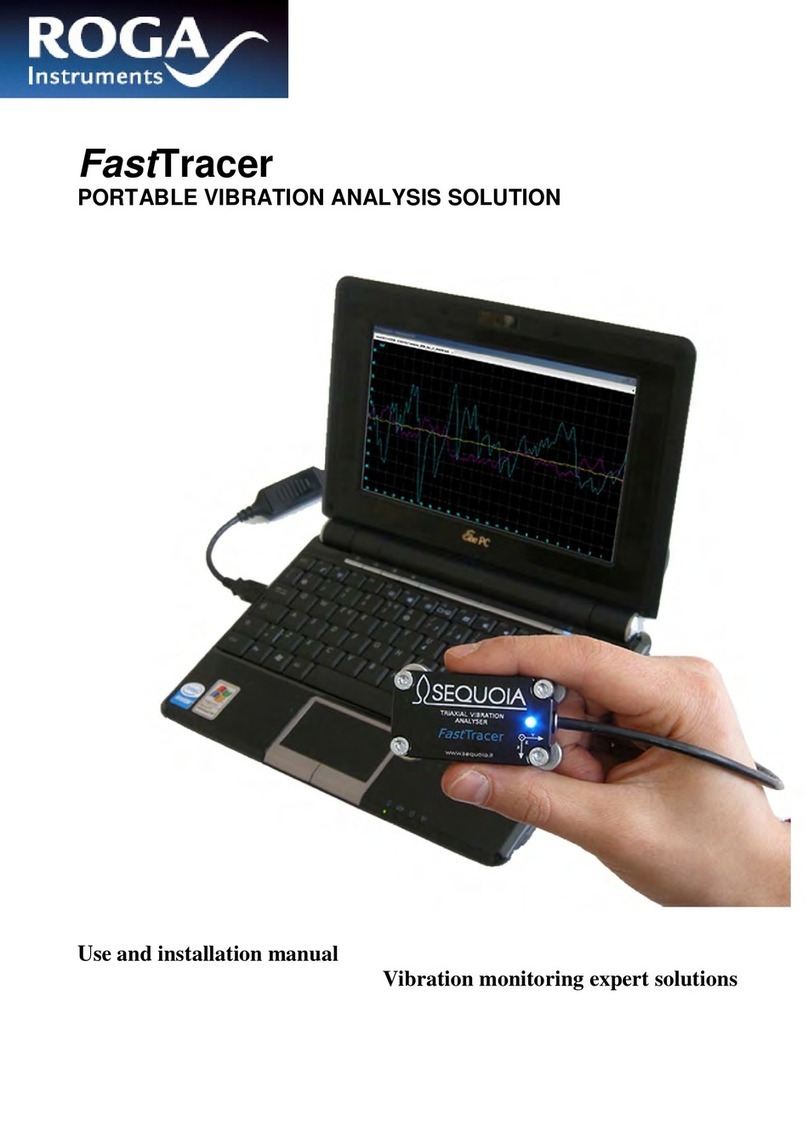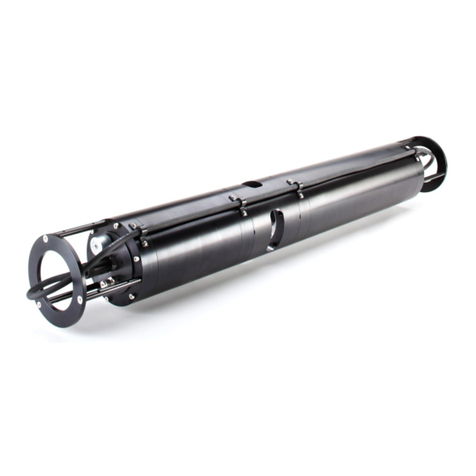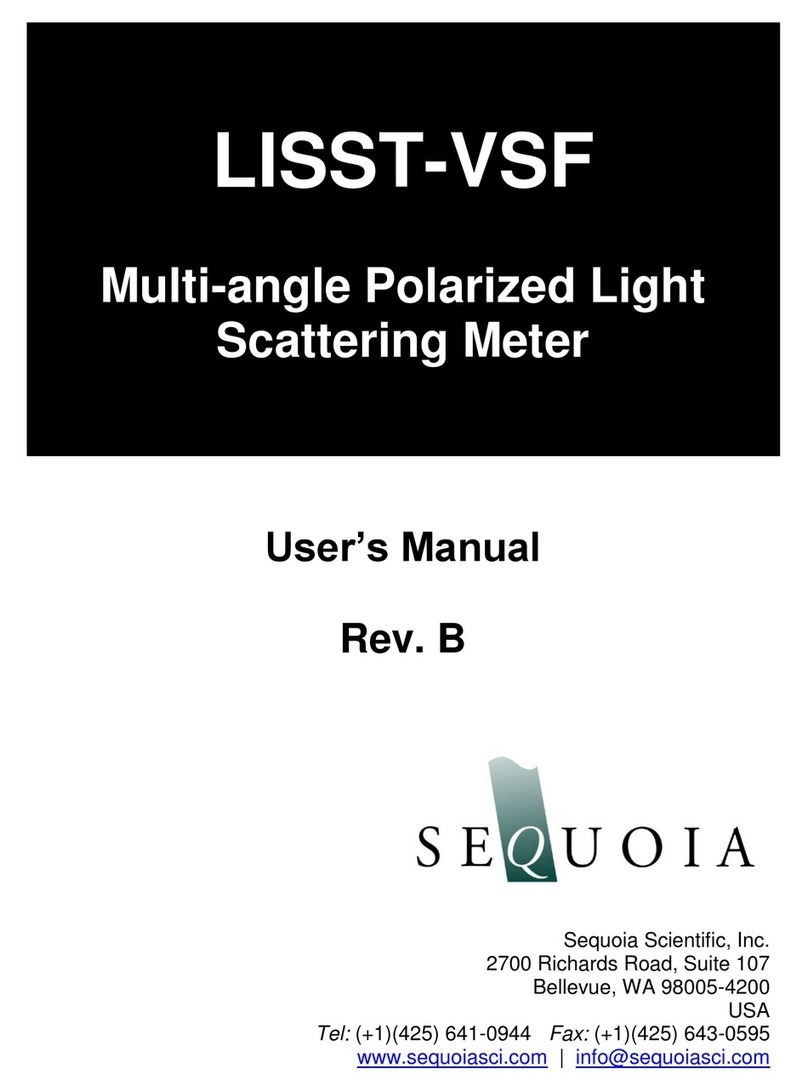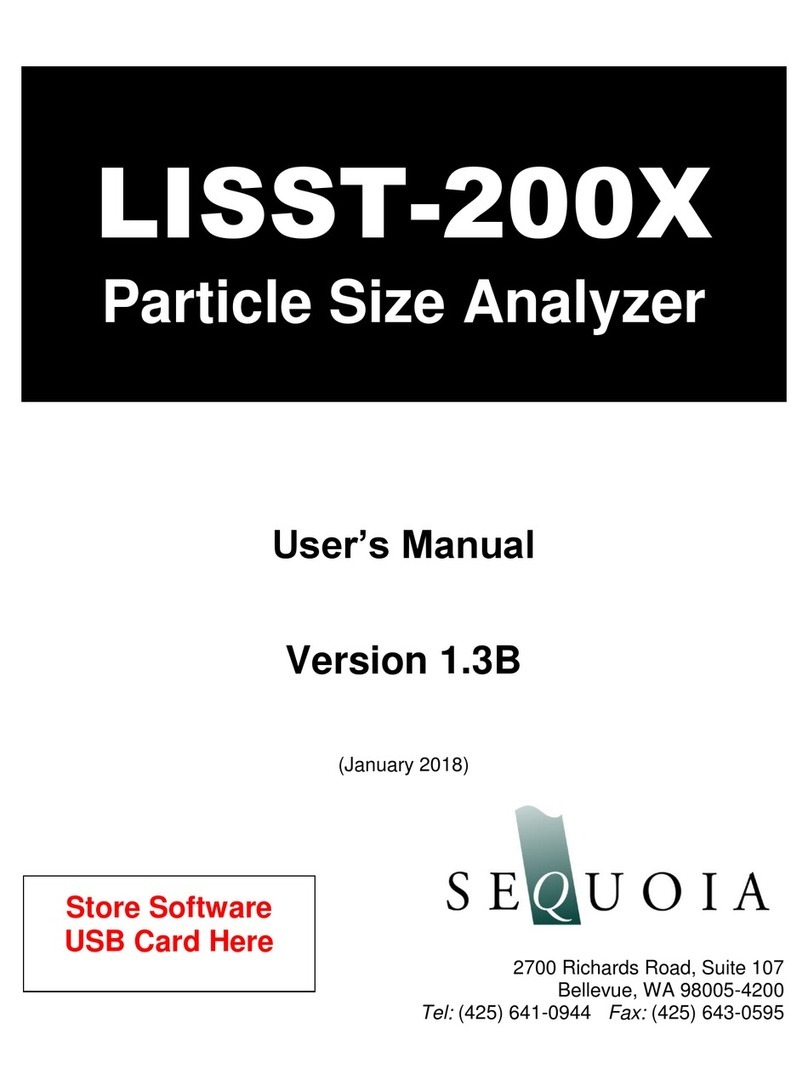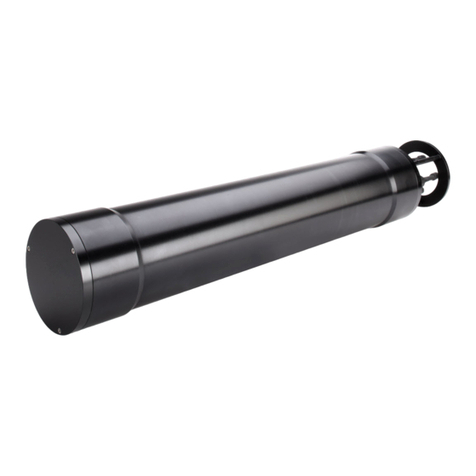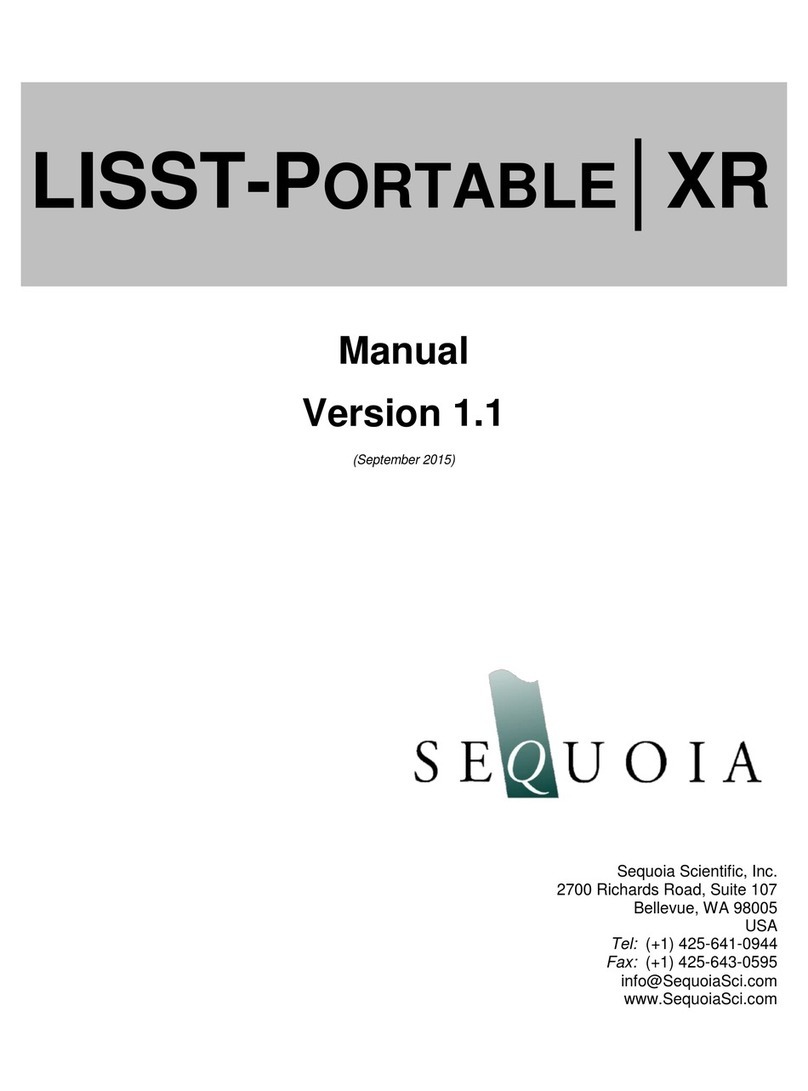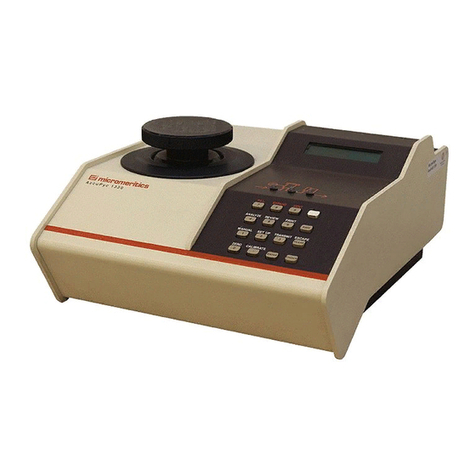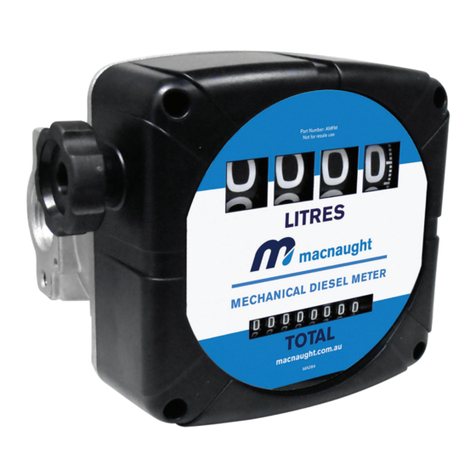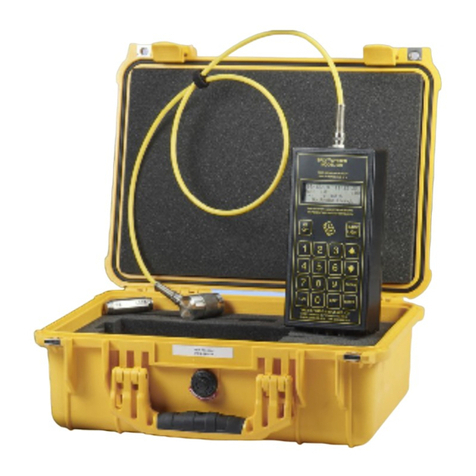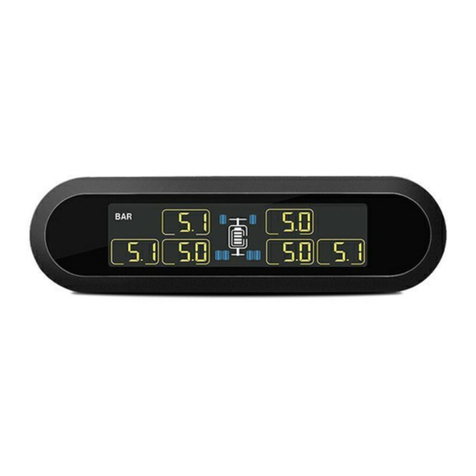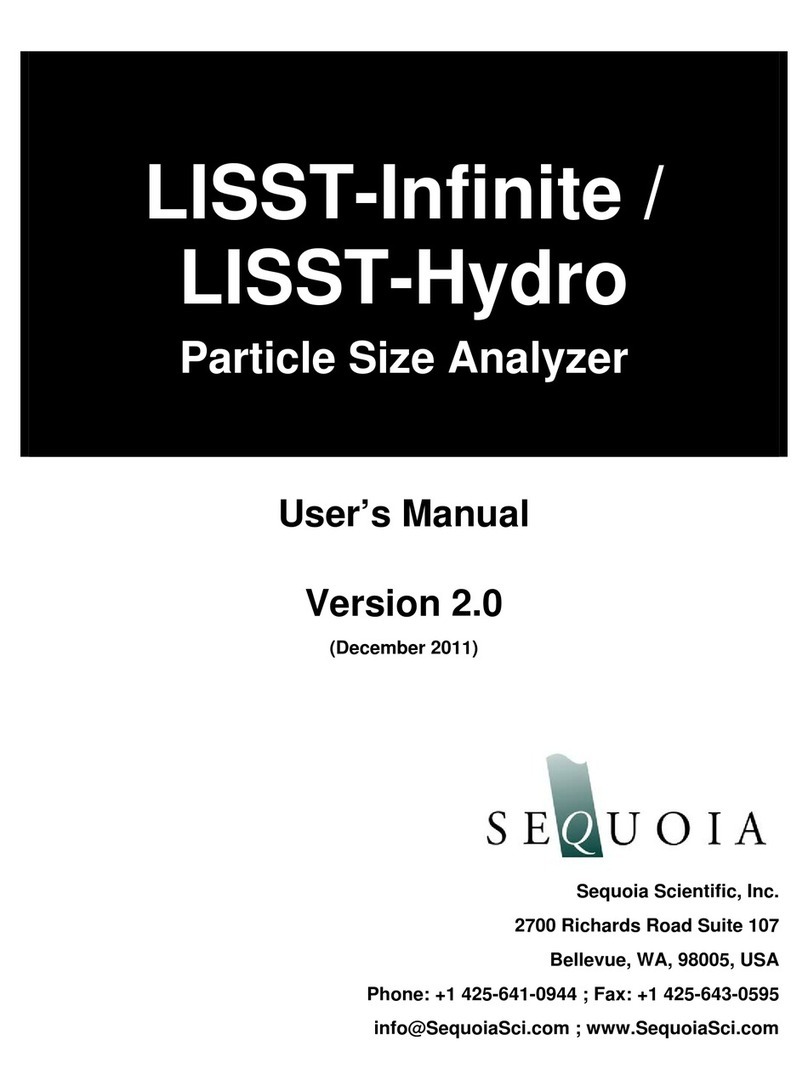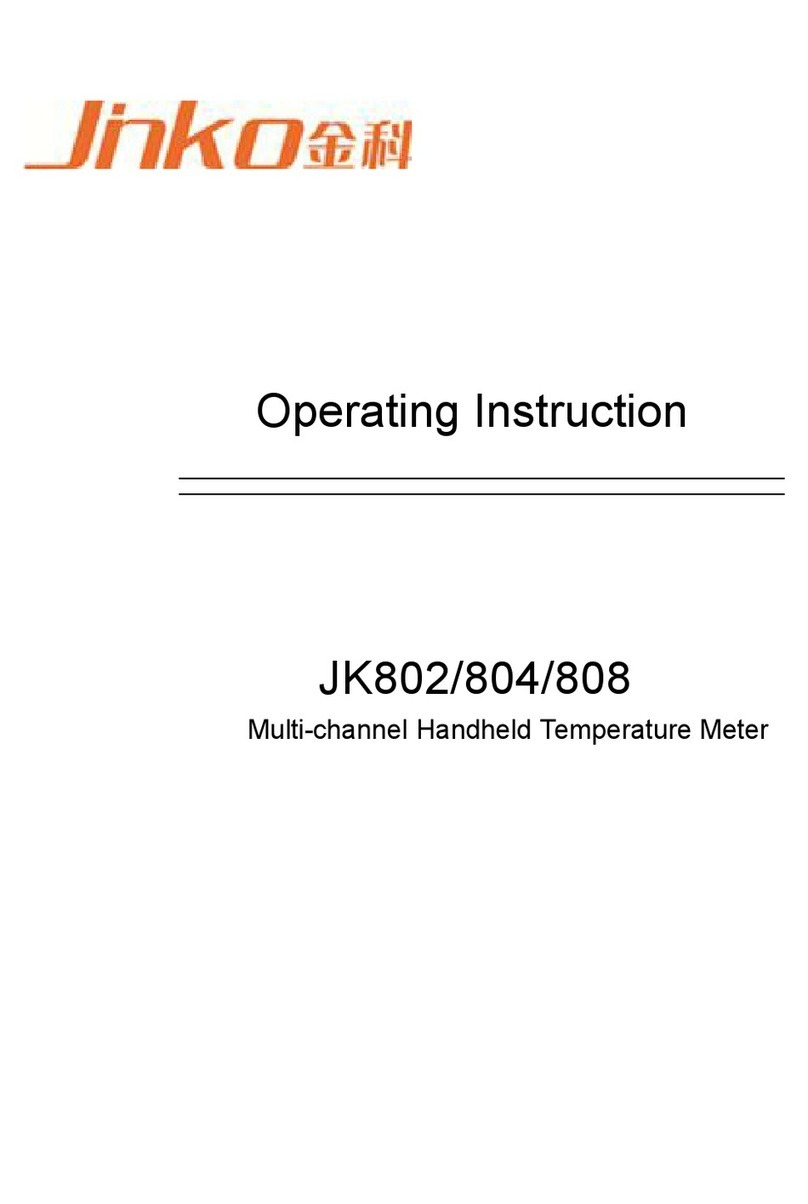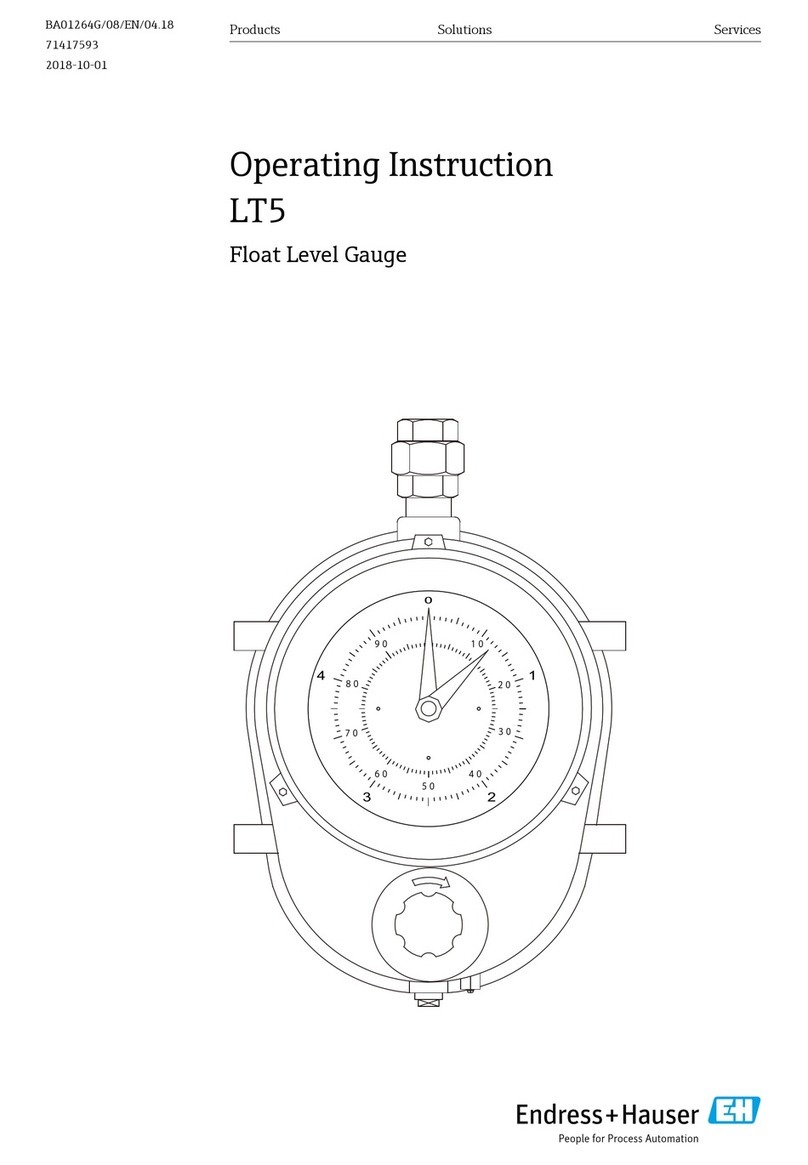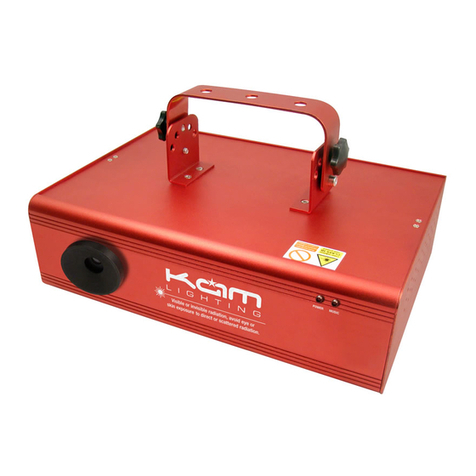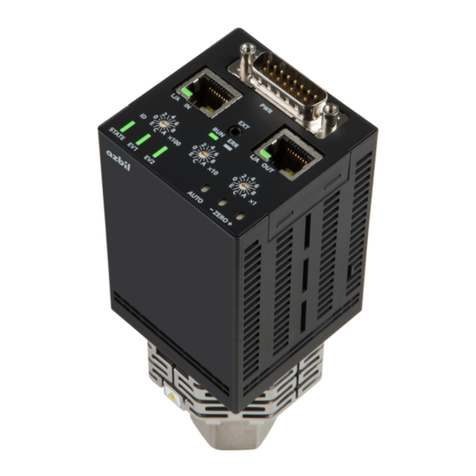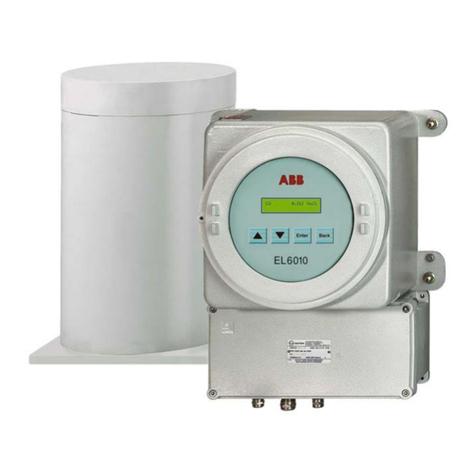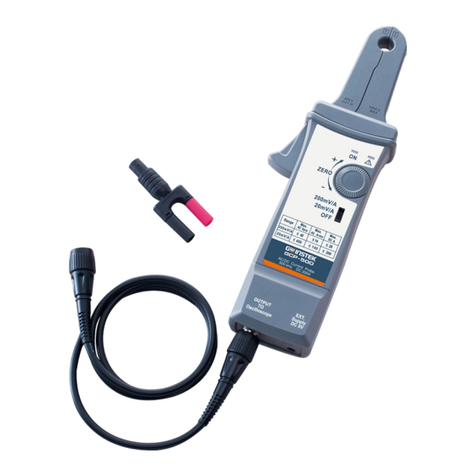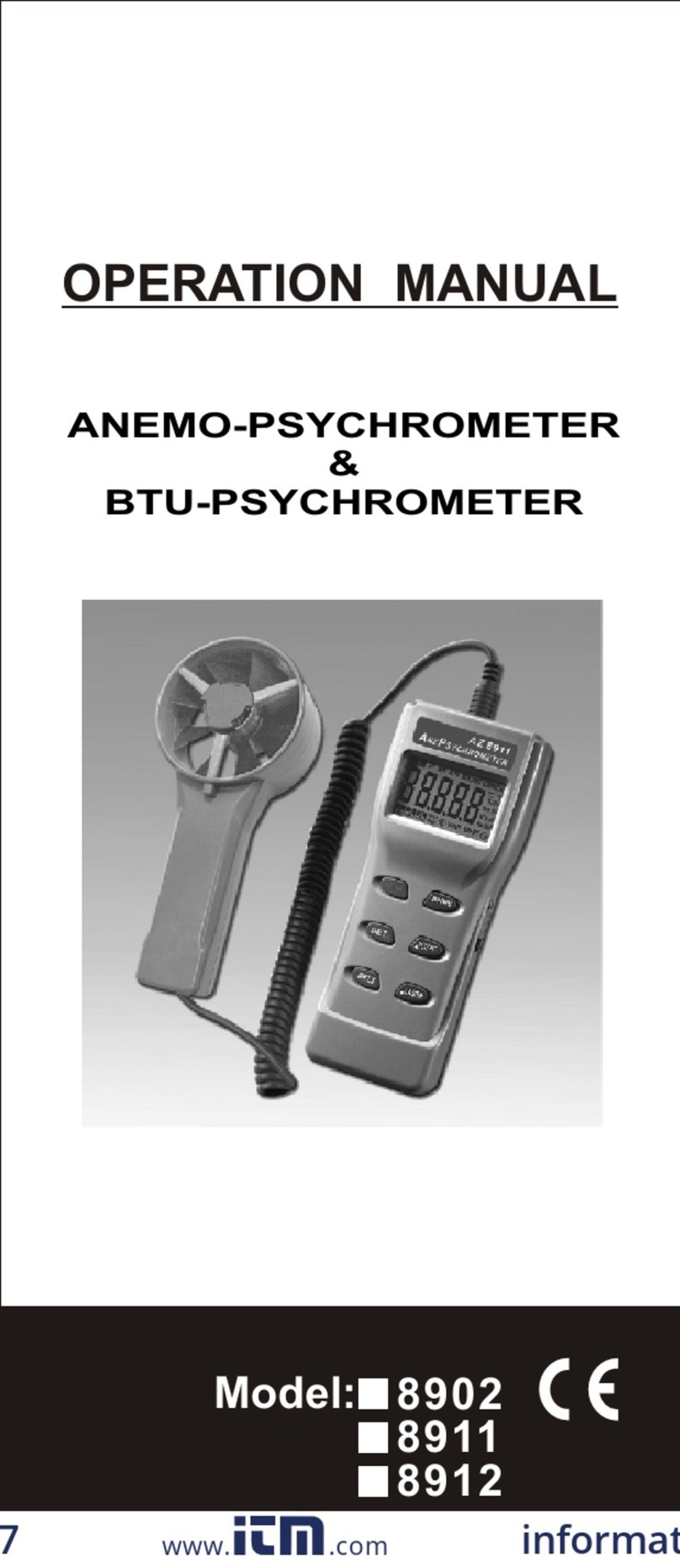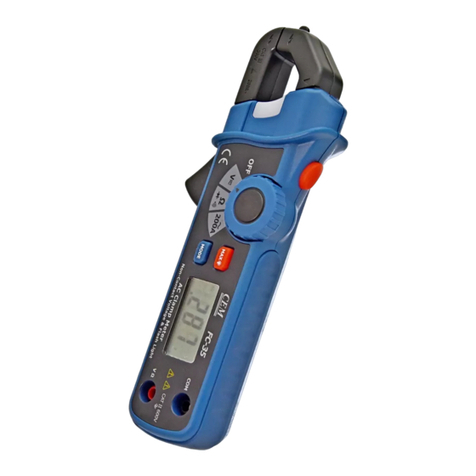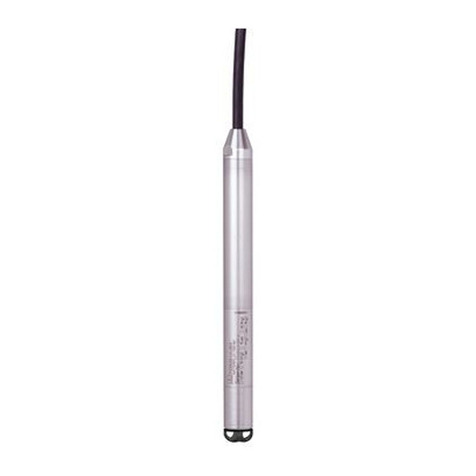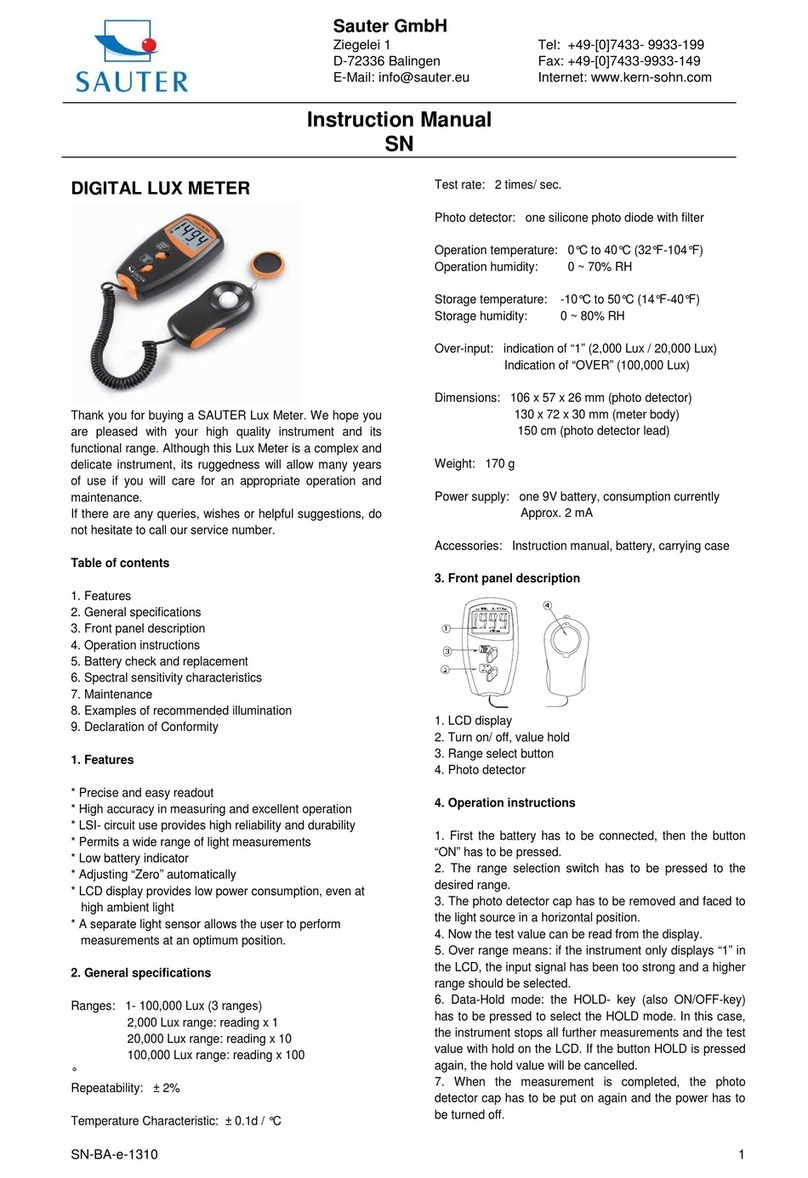The small-angle part of VSF is measured using ring detectors, identical to the
ones used in our LISST-200X instrument. Each ring detector measures the
VSF into a small angle range. The range of angles covered by the rings is
0.088 to 14.80. (e.g. Agrawal & Pottsmith, 2000; included on the USB card)
For larger angles, and to measure the VSF and depolarization components, it
is necessary to measure the intensity and polarization state of the scattered
light. The LISST-VSF employs a single linearly polarized laser and two PMT
detectors. One PMT measures scattered light into perpendicular polarization
and the other into parallel polarization. The laser polarization is alternated
between vertical and horizontal by insertion or removal of a ½-plate. In this
way, a total of 4 measurements is made at each scattering angle, see Fig.1
Figure 1: Schematics of the optics. Top shows collimated laser (FCL) passing through
a polarization ‘purifier’ (GT), a beam-splitter (BS), ½-
plate (HWP), and pressure
window (W1). The eyeball (EYE) rotates and views scattering along the beam (SV).
An ND filter on the receive window (W2) is incorporated to reduce glow from the
receive optics. It is followed by receiving lens for the ring detector optics (RD), and
transmission sensor (LP). The lower figure shows the folded path of received light, a
spatial filter (SF), a laser line filter (LF) and polarizing beam splitter (PBS) which
delivers light to the two PMT’s.
Past VSF instruments have either employed a fixed set of detectors viewing a
common scattering volume, or a telescope that views a scattering volume and
rotates around it. These systems are not suitable for autonomous use. In
contrast, the LISST-VSF instrument uses a rotating eyeball. This eyeball is
placed to the side of the laser beam. As it rotates, it views different parts of
the laser beam (Fig.1, top), i.e. at different angles. At each angle, 4
measurements are made - scattering in two polarizations for parallel and
perpendicular polarization of the laser. This produces the desired VSF, P12,
and P22. The splitting of the received scattered light is shows in lower Fig.1.
The eyeball makes the LISST-VSF instrument compact, autonomous, and
manageable underwater. As a result, this instrument may be left on a tripod or
mooring.
As explained in Appendix A, due to the rotating eyeball receiver, the stored
scattered light signals are a mix of the 3 parameters P11, P12 and P22. The
convenience of the eyeball thus involves a price –solving for these quantities.





















